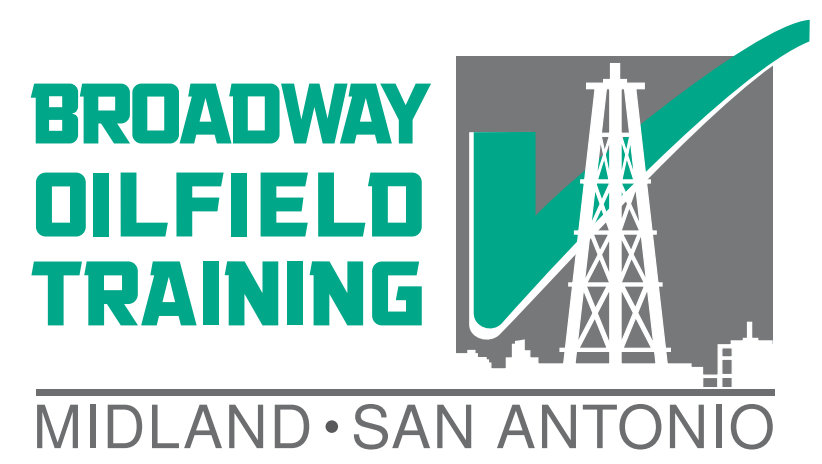THE OILFIELD ENVIRONMENT
The oilfield is a work environment that can be rather different from other workplaces in San Antonio. When it comes to hazards, including the hazards from H2S as it occurs in the oilfield, they can present themselves differently based on the differences in the oil and gas work environment. Better and more oil and gas specific H2S training is needed to keep oilfield workers aware of the oilfield specific hydrogen sulfide hazards.
FLAMMABLE
H2S is a flammable gas at concentrations above 4% and below 46% in a standard oxygen atmosphere. Where the open-air oilfield is concerned, to have H2S in these concentration ranges one would also expect natural gas to be present. When hydrogen sulfide concentrations are below the lower explosive range, the mixture can possibly still burn due to the presence of flammable natural gas. The higher density of hydrogen sulfide can also cause it to settle in confined spaces such as tanks in flammable concentrations.
PETROLEUM GAS SOLUBILITY
Natural gasses, as well as oil, are highly soluble fluids for containing H2S. In the oil and gas industry this can lead to trouble when people assume that due to H2S being a heavier chemical than air that it will always sink. When H2S is dissolved into a petroleum gas, however, the gas mixture can become lighter than air and create a situation where H2S will surprisingly rise.
INHALATION HAZARD
Inhalation hazards for H2S are ubiquitous in all industries where hydrogen sulfide is a hazard, workers in the oilfield need to be trained to know where H2S can be located. The well and petroleum product stream generally creates the primary source of hydrogen sulfide within the oilfield. This can create especially strong H2S concentrations around wellheads, pipelines, tanks, and other facilities. All workers sent to or near these jobsites should be receiving H2S training to give them awareness of the hazards and learn how to protect themselves from H2S. If they are working under appreciable quantities of H2S, they should also have a respirator with a valid fit test.
SKIN IRRITANT
One particular source of hydrogen sulfide exposure in the oil and gas industry comes from produced water. H2S is soluble in produced water and sour wells flowing back produced water can contain appreciable quantities of H2S in the water stream. This is especially problematic in the well servicing arena where workers may be exposed to produced water and continue working under the assumption that the water itself is not hazardous. If the water contains H2S, however, that H2S can dissolve into the worker’s skin and cause rashes and other irritation after some time. Unfortunately, it is more difficult to detect the presence of hydrogen sulfide in produced water, so workers need to be trained not to expose their skin and clothing to the flow back.
EYE IRRITANT
Hydrogen sulfide is also an eye irritant which can be delivered to the eyes through vapors or liquids (oil or water with entrained H2S). ANSI approved safety glasses with side shields can give some protection from liquids splashing into the eyes but not from vapors entering the eyes. A full-face mask respirator when properly fit tested is designed to protect the eyes from H2S vapors.
EMBRITTLEMENT
Hydrogen sulfide interacts with carbon steel by causing the metal to weaken slightly and stiffen considerably. This is an extremely negative quality in oilfield tubulars where strength and flexibility are needed. The consequences of a hydrogen embrittlement failure can lead to a well control failure while the well fluids themselves contain the additional hazard of entrained H2S.
IRON SULFIDE SCALE
Hydrogen sulfide can also attack the steel as an acid and wear it away. This eats up the carbon steel and later in the flow stream creates iron sulfide scale as the produced water attempts re-attain equilibrium. When introduced into the water handling facilities, iron sulfide scales can cause increased chemical use and plugging. Some forms of iron sulfide can also create a flammable hazard.
SULFUR DIOXIDE
When burned, hydrogen sulfide creates another hazardous gas called sulfur dioxide. The burning of H2S into SO2 is often considered necessary for process safety when too much H2S is produced from a single source. SO2 is an extreme lung irritant and requires workers to be trained to be aware of its presence as well. Should workers need to work in actionable level SO2 atmospheres, they will need to be trained to use and properly fit tested on a full-face respirator with supplied air or SCBA.
Recommended training: Online H2S Class
Notice: Article is provided as is and for informational use only. Eagle Ford Training San Antonio, its owners, instructors, and affiliates hereto referred as the company shall have no liability for and you shall defend, indemnify and hold harmless from and against any claim loss demand, liability, obligation, and expense based upon any injury or damage, spill or pollution, product liability, or any other loss that may occur. The liability for the use of information is solely yours notwithstanding any act of error or omission by the company.
